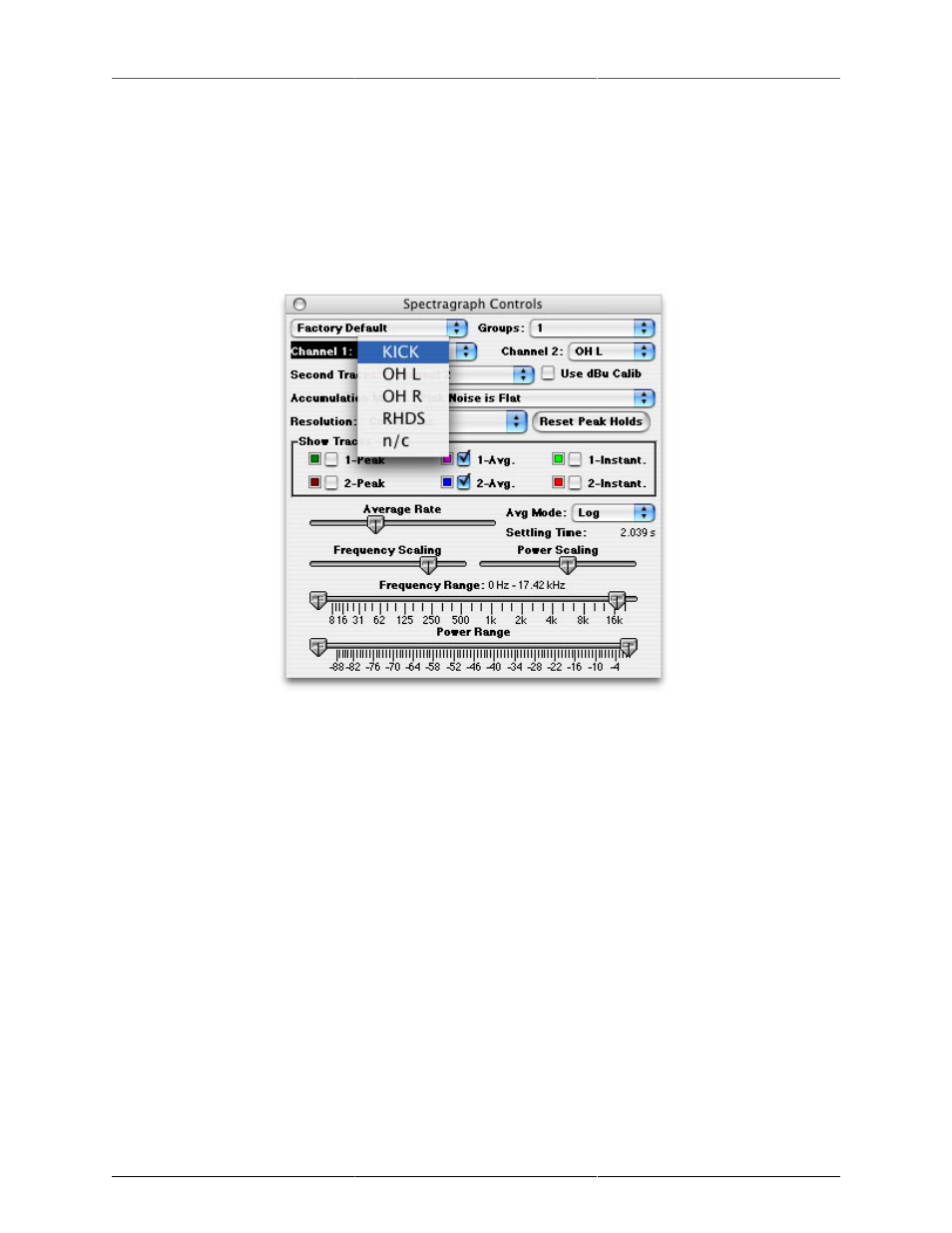Difference monitoring for all instruments, Channel names show in all instruments – Metric Halo SpectraFoo User Manual
Page 82

Controlling Audio and Instruments
82
The number of analyzer channels determine how many different channels you can analyze at once. If you
need to analyze more channels at one time, see the section on changing the number of analysis channels. If
you just want to quickly switch analysis to a different one of your input channels, use the analyzer channel
pop-up menu. Note that you do not have to stop the transport to change the routing from within SpectraFoo.
Each instrument in SpectraFoo is assigned an analyzer channel that it gets its analysis data from. The Active
Channel pop-up menu in the control window of each instrument is used to select the instrument’s source
analyzer channel.
Figure 5.12: Channel names show in all instruments
Once you have assigned an input channel to an analyzer channel the input channel’s name is propagated
throughout SpectraFoo. So, as you see above, the channel names that appear in the instrument Active Channel
pop-up menu are those of the input channels that have been associated with the analyzer channels.
If you change the input channel associated with an analyzer channel, all of the instruments that are assigned
to the analyzer channel will update automatically.
This two-layer mechanism works extremely well when you have a large number of source tracks that you want
to alternately apply the same type of analysis to. For example, lets say that you are mixing from a 24 track
master. It is unlikely that you would need or even want to do spectrum, level and phase analysis on all 24
channels at once. But you may want to set up 4 clusters of instruments with each cluster assigned to a different
analyzer channel. You can easily switch any cluster to any of the 24 master channels by using the analyzer
routing control. Any of the channels is just a click of the mouse away.
Difference monitoring for all instruments
The Analyzer can analyze the sum & difference of each pair of channels as well as analyzing each channel
separately. This can be useful for a number of applications including looking at the comb filtering caused when
a stereo pair is summed to mono.